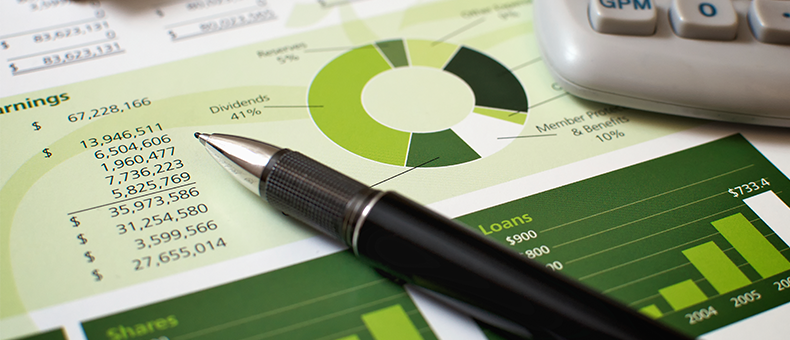
Cash is the fuel that makes a business run.
You need it to pay salaries (including your own), fund marketing programs to acquire and retain new customers, invest in equipment and facilities, pay rent, buy supplies and many more day-to-day activities.
The purpose of this post is to help you figure out how much cash to have in reserve — how much is enough. Most financial experts recommend three to six months of operating expenses, but using this for every business in every situation is misleading.
To determine how much cash you need, you must look at the following key areas:
How much cash have you been using?
If you’re an established business owner, look at your monthly cash flow report (or go to the next paragraph if you’re a start-up). This report will provide a historical and seasonal perspective. Note the cash received from sales and the cash spent. The net of these two is often referred to as the “net burn rate.” For example, if you have $50,000 in sales and $30,000 in expenses, your net burn is +$20,000.
Your “gross burn rate” only takes cash expenditures into account; in our example, that’s $30,000 and is the more conservative amount, since it does not assume any sales are made. Historical spending patterns are a good starting point in considering future spending plans.
How much cash do you plan to use?
Look at the monthly cash flow projection covering the next 12 to 15 months. If you’re an established owner, you can find this information in your monthly budget, or if don’t have a budget, from a financial forecast created for this purpose. For start-ups, you’ll find your answer in the financial section of your business plan. As you did with actual cash expenditures in the preceding paragraph, look at the sales (cash in) and expenditures (cash out) separately.
Be conservative in your forecast as actual results often differ from what’s stated in your business plan. And keep in mind that expenses are usually more predictable than revenue because many are relatively fixed, such as payroll and rent (often the two largest expense categories). And for start-ups, separate the one-time upfront costs needed before you can open your doors from your ongoing operating expenses.
For a small business, the past is not necessarily the best predictor of future needs. You need to consider the stage of your business in your forecasts.
What stage is your business in?
Are you in start-up, first year of operation, maintaining an ongoing steady business, or do you have plans to grow or make large purchases? Each of these will impact the cash forecast discussed above. While an established business may have good benchmarks, a start-up has few benchmarks and the most uncertainty, and thus should be more conservative when setting cash flow needs.
In growing businesses, accounts receivables, and maybe inventory, expand to support the increased sales. But it is often overlooked that you need cash to fuel this growth — you must spend money to generate the sale before the customer remits cash.
How long will it take to get more cash?
Now you know your cash needs for the next 12-15 months. The next consideration is how long it will take to get more cash if and when it is needed. If you’re funding the business from your own resources, the time is short. Getting the needed funds likely means writing a check from a bank account or selling a security from an investment account — maybe three to five days until the cash is available to use.
However, if you need a bank loan to get cash, it might take two months — one month to find a bank willing to make the loan and one more month to do the paperwork. This option assumes you have a business plan in almost-ready condition and have maintained good relations with your bank if you have an established business or on your personal account if you’re in start-up mode.
Raising funds from angel investors extends the time considerably. If you go this route, count on six to nine months to prepare the business plan/investor pitch, make presentations to several angel groups to find one that is interested and a good fit, and wait while the angel group conducts its due diligence.
Once you know how much cash you’ve been using, how much you plan to use, and how long it will take to get it, you can determine how much cash you need to keep in the business. For example, if you plan to use a bank loan to fund your cash needs and you plan to spend $50,000 a month then you should probably keep $100,000 in your bank account — if you have certain sales revenue occurring in these two months you can reduce the needed cash in the bank by a like amount. However, if you plan on using angel funding then you might want to have $300,000 in your bank account.
Before approaching a bank or angel group consider some other funding sources
Are there other cash sources?
There are many other sources of cash. For purchases, ask the vendor for credit terms or a longer period in which to pay. For sales, ask customers to pay you in shorter timeframe and offer a discount as an incentive to pay earlier. Other cash sources include increasing your credit card balances, taking out a home equity loan, borrowing from family and friends, tapping into savings and retirement accounts, leasing rather and purchasing equipment — the list goes on. It’s also good practice to have a bank line of credit as a safety net — one that can be dipped into when needed.
When is the best time to seek more cash?
A common axiom is that the best time to obtain funds is when you don’t need them. Sounds counterintuitive, but during these times you aren’t desperate to take the only offer made. You have time to shop for the best source, with the best terms, and you can negotiate from a position of strength.
Too much or too little cash
There are many lists of common reasons for business failures. The two items frequently near the top are undercapitalization (not enough cash) and overcapitalization (too much cash). The first reason is pretty easy to understand. But companies can also get into trouble when they have too much cash, as they often undertake projects, hire staff, buy equipment, move to larger offices, and partake in other such expensive actions, which incur ongoing implications like fixed costs.
Often these decisions are not made with the same planning rigor when cash was tighter. If your company is fortunate enough to have “excess” cash beyond the forecasted needs, then make a distribution to the owners rather than make a decision that may have far-reaching effects.
Key Lessons
- Know how much cash you’ve spent and how much you plan to spend.
- Determine where you will obtain cash if and when it is needed, and how long it will take to get it.
- Match lessons 1 and 2 to determine how much cash you need to retain.
- Understand the stage of your business to determine if modifications to historical spending patterns are needed when considering forecasts.
- Be conservative in your estimates, rarely do actual results match forecasts.
- Seek cash when you are in a position to explore options and negotiate from strength.
Next Steps
- Update your business plan, budget, and financial forecasts so they give you good information now and are available if and when they are needed.
- Research funding sources for future use.
- Go to your bank and explore getting a line of credit so you have a safety net if and when it is needed.
Hal Shelton’s business planning skills were developed as a certified SCORE small business mentor, corporate executive, nonprofit board member, early-stage company investor, and author of The Secrets to Writing a Successful Business Plan: A Pro Shares a Step-By-Step Guide to Creating a Plan That Gets Results. Suggestions for additional topics are welcome: email Hal directly from his website: www.secretsofbusinessplans.com.




